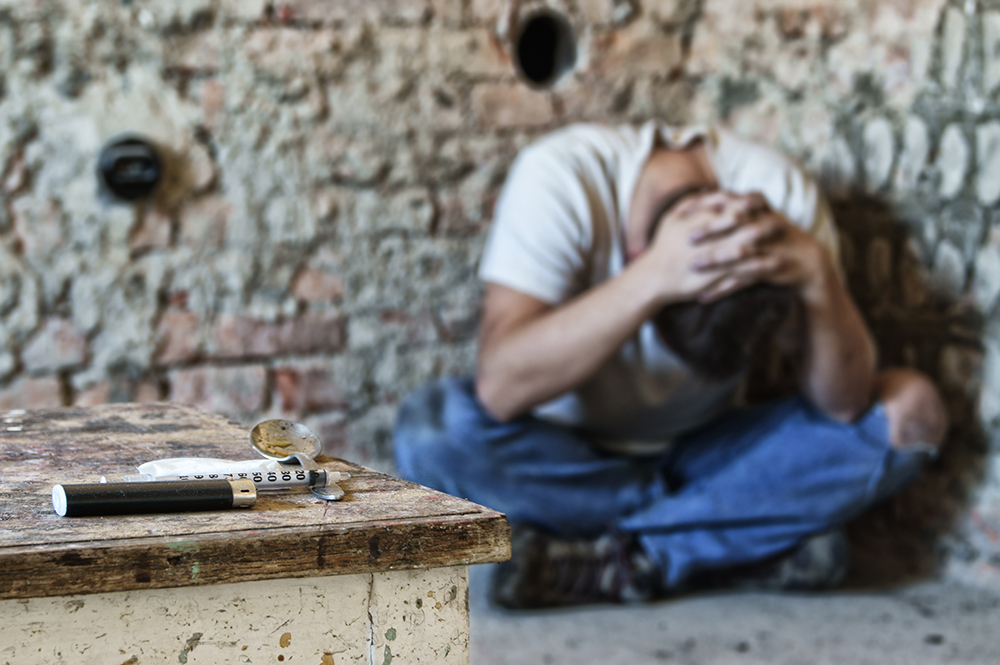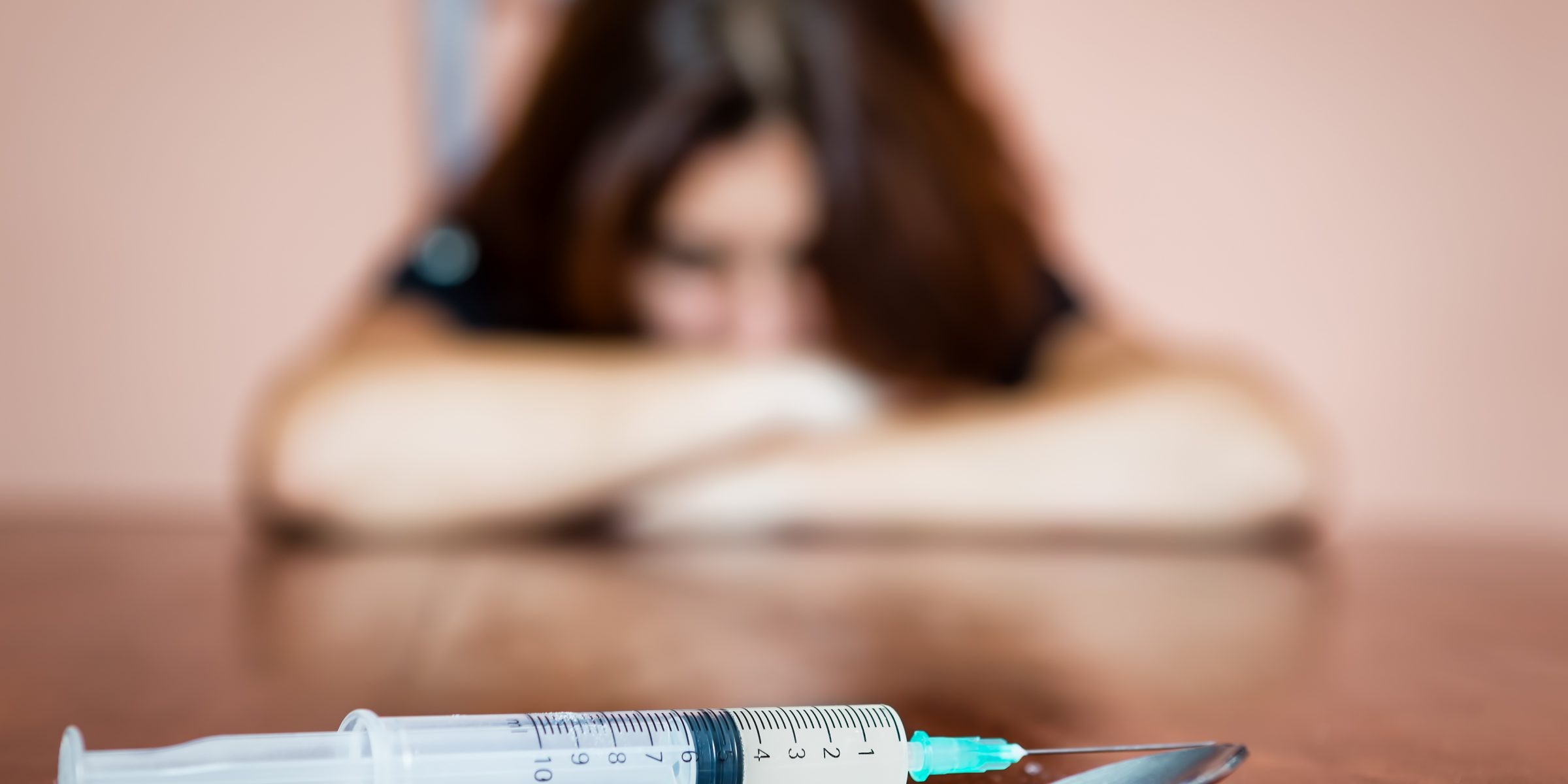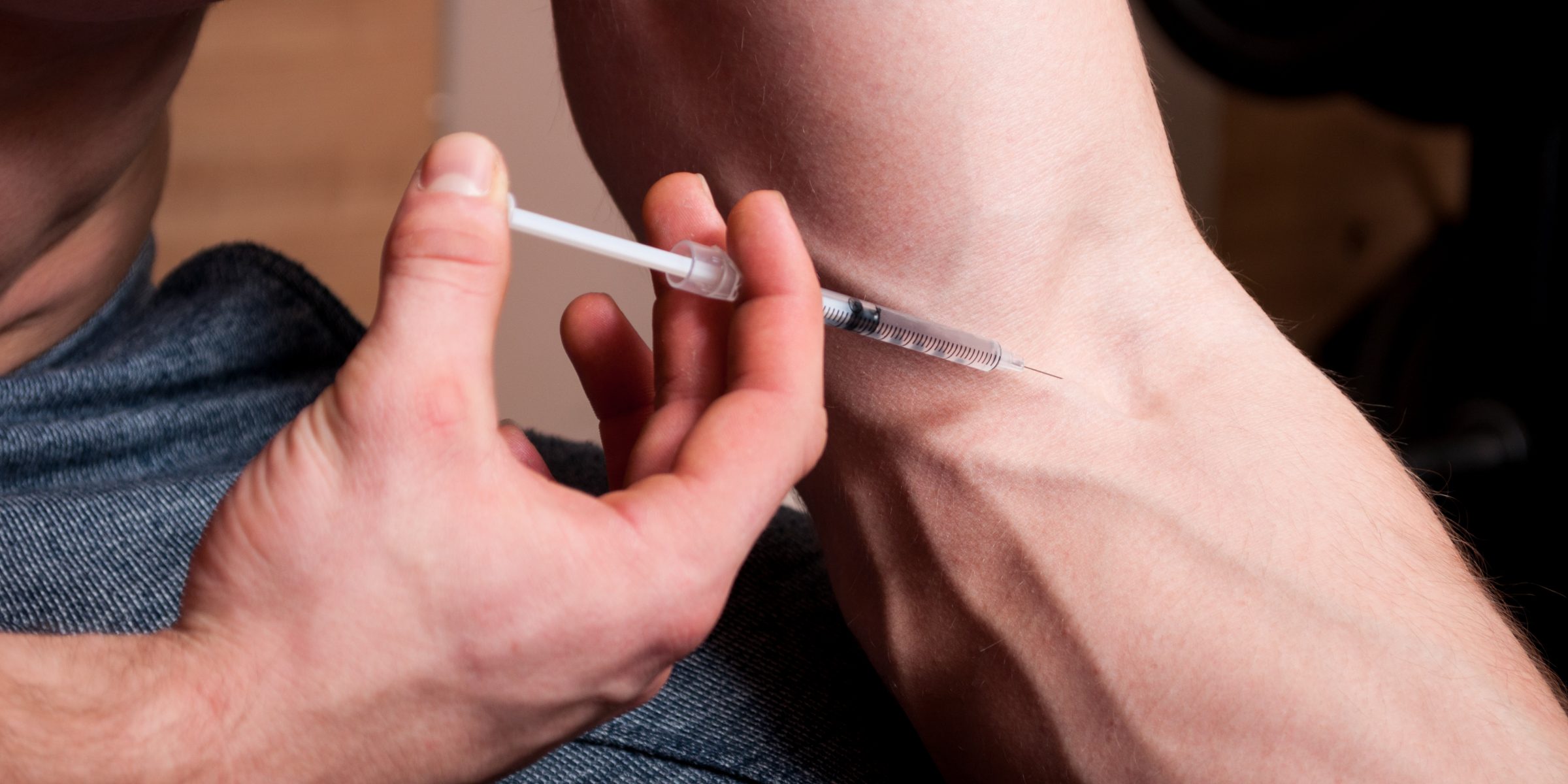
Heroin is an extremely potent illicit drug known as an opioid, originally derived from poppy flowers. People who use heroin typically smoke it or inject it directly into veins. The “high” from this drug is fast-acting, bringing on extreme euphoria. Heroin is very addictive, and its use can lead to overdose and death. According to the National Institute on Drug Abuse(NIDA), over 500,000 people are addicted to heroin in the United States. The number has been climbing steadily, likely due to an increase in synthetic opioid painkiller abuse. The so-called “heroin epidemic” is reaching a fever pitch, with many local municipalities overwhelmed by overdoses. Recently, heroin laced with a powerful synthetic opioid called fentanyl has been causing an alarming number of reactions, with one West Virginia town reporting 27 overdoses in a four hour span. In Cincinnati, Ohio, another city ravaged by heroin, the number was 174 over six days. Typically, the city sees four overdose calls per day, with the average per week number being around 25. “It’s been exhausting,” Cincinnati Police Lt. Col. Mike John recently reported. “They’re running from one run to another. It’s been very taxing on the officers and the fire department.” The rise in the use of heroin has largely been blamed on the fact that the number of people abusing prescription painkillers, most of which are chemical opioids and mimic the high of heroin. Commonly used painkillers include fentanyl, hydrocodone, morphine, and oxycodone….

Opioid withdrawal is a dangerous, excruciating endeavour in the best of times, under the care and supervision of qualified professionals in addiction recovery centers. But some people are not so lucky and are forced to detox in jail cells, where they may be deprived of care or maintenance treatment. In 2007, the U.S. Department of Health and Human Services estimated that 15% of the people entering jails and prisons were addicted to heroin, an opioid drug. Most U.S. jails, however, don’t give inmates any treatment or medication for opioid withdrawal, and they must suffer through the symptoms unmedicated. While some cases of withdrawal are relatively minor, with symptoms such as insomnia, muscle pain, and runny nose, others must endure dangerous levels of diarrhea and vomiting, dehydration, and even delirium, seizures, and convulsions. The withdrawal process can last between several days and a week. When inmates are forced to go through untreated opioid withdrawal, several adverse effects occur. Those who are going through withdrawal may attempt to find heroin in jail to ease their symptoms, and spread bloodborne diseases like HIV due to shared needles. People who detox from opioids cold turkey are also in danger of overdose once they leave jail—their tolerance is reduced to zero, and when they try to take the same dose as before jail, their system can’t handle it, and they die. Inmates who don’t receive methadone maintenance treatment while in jail are unlikely to seek…

It turns out your mother may be right—one sip is all it takes. A new study from the Journal of Neuroscience suggests that the first taste of alcohol has a lasting impact on how your brain learns about and understands drinking, with results that could have monumental impacts for how addiction recovery centers treat and care for alcohol addiction. The study focuses on the dopamine reward system in the brain, a system that developed to help humans increase their chances of survival. Our brains contain a naturally-occurring neurotransmitter called dopamine, which causes pleasant effects when released into the brain. Whenever we perform activities necessary for life—like eating, socializing, or having sex—small bursts of pleasurable dopamine are released into the brain. Over time, our brains learn to associate activities like eating, socializing, and sex with pleasure, ensuring that we keep engaging in them and increase our chances of survival. Drugs like alcohol, however, hack this reward system. Whenever a person takes a drug or drinks alcohol, the brain releases floods of dopamine, much more than usual, causing a euphoric high. This high, many times more powerful than the smaller bursts of dopamine which come from more mundane activities, teaches people to continue doing drugs or drinking. The treatment programs at addiction treatment facilities often work on reversing this teaching, by helping people wean themselves off of drugs and resist powerful cravings. Researchers have pinpointed a neuron, called D1, which is closely…

When you’re looking for an addiction treatment program, outpatient programs tend to seem very alluring. They allow more flexibility during recovery and the treatment process, which enables school, work, and home responsibilities to continue while recovering from an addiction. Not every client is a candidate for outpatient programs though. Educated and experienced case managers work with each client to determine the addiction history and severity of substance abuse before recommending which type of program will work best. Once it has been determined that you’re a good candidate for outpatient treatment, you may have some questions as to what the treatment process will entail at the drug rehab center. These types of programs generally require at least six to nine hours of treatment per week and sometimes extend up to twenty hours per week. The duration of the program can last from a few months to a year, or even longer. It really depends on each client’s severity of addiction. There are different types of outpatient programs, so it’s important to find the one that is right for your lifestyle. Right Path Drug Rehab’s helpful intake coordinators are skilled at placing our clients into the right program for their needs. Intensive outpatient programs are perfect for clients who have just finished an inpatient treatment program. It allows them to begin to gain a sense of personal freedom and responsibility while being monitored and supported in their recovery. Clients are generally allowed…

Surfing isn’t all big waves and beautiful sunsets over the ocean. The free-wheeling surfing culture is inundated by a sinister tendency toward drug use and addiction, all the way from local surfers to the big-name competitors. But due to the insulating culture, many surfers don’t get help from addiction recovery centers. Surfing’s preoccupation with drugs probably began with its counterculture roots in the 1960s and ’70s. Sharing drugs was a way to foster the community and camaraderie of surfers as well as a means of holding onto and reinforcing their anti-authoritarian image. And though today’s surfers aren’t necessarily trying to contest mainstream culture, drug use has persisted. Drug use is particularly egregious in the higher levels of the sport. Kelly Slater, one of the world’s best professional surfers, says drug use is rampant, and compared the pro surfing scene to rock and roll in its heydey, when plenty of drugs were available on demand. As the pressures to perform and make a high salary mount, more and more pro surfers are using drugs to cope. But as stress rises, the culture remains lax, and many don’t go to drug rehab. Like other professional athletes, pro surfers may turn to substances to help them perform better than their competitors. Drugs may help surfers deal with the anxiety of surfing big waves, recover faster from injuries, and be more alert or energized on the board. ASP, the competitive surfing body, now bans…

Feeling down? Pour yourself a glass of wine. Want to join the party? Grab a beer. These are the messages we hear every day, from advertisements, from friends, from media. Our culture tells us that alcohol helps us to loosen up, chase away sorrows, and even find happiness. But research has shown that while alcohol can alleviate gloominess in the short-term, it’s nowhere near effective at promoting good vibes in the long-term. Instead, regular heavy drinking only pushes people toward addiction and treatment in an addiction recovery facility. A team of researchers from the University of Kent studied the drinking habits of 17,000 people in the British Cohort of 1970, asking participants how much they had to drink in the past week and how satisfied they were with their life. Then, they used an app to gather survey data from 31,000 people in the U.K. between 2010 and 2013. At random times throughout the day, the app asked people what they were up to, and how happy they were in that exact moment. The results of the study suggest that alcohol can make people happy in the moment, but anyone who develops problem drinking will not be happier in the long-term. Indeed, anyone struggling with addiction needs professional help from a drug rehab program. According to the study, the participants who responded to the app provided over two million data points. When drinking, they reported being, on average, four points…

Codependency is a learned set of emotional and relational behaviors that manifests in a relationship where one person is in control and the other person enables. While couples are the archetype of codependency, whole families can also be codependent. Codependency often centers around addiction, where the addicted person becomes the focus of the family or relationship, and the others scramble to enable, assist, or help the addicted person hide their addiction. Though codependent people act in love, their good intentions will only worsen the addiction of a loved one by preventing them from getting help in an addiction recovery facility. In a codependent family, communication is usually dysfunctional. Instead of voicing their thoughts and feelings in a respectful way, codependent people bury their feelings, avoid conflict at all costs, and pretend that problems don’t exist. Over time, a codependent person will begin to place the needs of their controller above their own. The addicted person will only become more dependent on their caretaker, and won’t get help in drug rehab. Overall, people who are codependent suffer from low self-esteem and intense self-scrutiny. Because they don’t feel good about themselves, they seek out ways to make themselves feel worthy. Dedicating themselves to a high-stress, high-cost relationship, where they can prove their value by sacrificing everything, gives codependent people a sense of worth. Sometimes a codependent person becomes addicted themselves to deal with their inner pain. Though not all codependent people develop…

Though the culture has shifted since the moralizing days when drug addiction was seen as a moral failure, stigma still persists. Many people who are suffering from alcohol or other drug addiction are too scared to seek help in an addiction recovery center, for fear of ridicule or gossip, even from close friends and family. But idle chatter or mean-spirited vitriol shouldn’t come between anyone and the hope of recovery. First and foremost, if you’re entering an addiction treatment facility without the support of certain friends or family members, try to distance yourself from them. During this crucial period of early recovery, you should concentrate your energy on becoming sober and learning how to cope, instead of wasting time on people who will only drag you down. Surround yourself with people who care about you and will uplift you, encouraging you in your recovery efforts. A time may come when you can repair the relationship, but allow yourself to focus first on taking care of yourself. Early recovery is a time of upheaval, of great ups and downs. You may struggle minute by minute to break the hold of your addiction, or suffer through withdrawal symptoms, but you may also be inspired by the courageous people around you, and make dear friends. Take this tumultuous and exciting time to focus on yourself, celebrating your accomplishments and learning from your mistakes. Focusing on your detractors will only lead to distraction and…

Bullying, an altogether too common experience for adolescents and teenagers in school, leads to substance use for both the victim and the bully. The harrowing effects of bullying push victims to find solace in drugs, while bullies themselves may be prone to substance use due to troubled home lives or a possible proclivity for risk-seeking. It’s understandable why victims of bullying would turn to drugs. When they must deal with torment and terror every single day, drugs can take away the pain. Kids get beaten down and told that they don’t matter, and these ideas have horrific, long-term effects on people, including low self-esteem and lack of self-worth. Bullying during youth can also cause lifelong trauma that results in emotional issues and even mental illness, both triggers for drug use. Ending bullying early and assisting kids in receiving treatment in addiction treatment centers can help them get on the right path again and renew their sense of self-confidence. Surprisingly, bullies themselves are at risk of drug use too. A study that surveyed nearly 75,000 middle and high school students found that kids who bullied others were more likely to use substances than non-bullies. 11.4% of middle school bullies and 31.7% of high school bullies reported marijuana use, compared to 1.6% and 13.3% of non-bullies, respectively. So what causes bullies to use drugs? Researchers posit that both bullying and substance use are deviant behaviors, and an underlying link for…

Elite athletes, such as Olympians or Ironman triathletes, usually conjure up images of drivenness, motivation, strength, and focus. It’s jarring, then, to realize that many elite athletes are susceptible to drug or alcohol addiction. Exercise itself can be addictive, priming athletes for future addiction. And the same attributes that transform these men and women into all-star athletes also lead them down the path of addiction, while leaving competition can cause feelings of intense loss or chaos. Elite athletes’ vulnerability to substance use disorders takes on new light when we understand exercise as an addiction in itself. Just like drugs, exercise stimulates and spurs the production of dopamine in the brain, flooding the exerciser with a pleasant, euphoric feeling. Over time, a person can become addicted to the natural high that exercise creates. So when an athlete stops training, whether to retire or to rest, they may feel minor withdrawal symptoms, such as restlessness, irritability, anxiety, or a craving that they must satisfy. Unfortunately, this can lead athletes to turn to drugs, which provide a similar but much more powerful high. As the neural pathways for addiction are already established, athletes have a higher risk of becoming addicted and needing treatment in drug rehab. In addition to primed neural pathways, athletes’ personality traits increase their risk of addiction. The traits that allow athletes to succeed in competition—risk-taking, impulse-seeking, and focus—can all translate negatively when transferred to addiction. For example,…
 Pathways Drug Rehabilitation Luxury Addiction Treatment & Detox Center
Pathways Drug Rehabilitation Luxury Addiction Treatment & Detox Center
